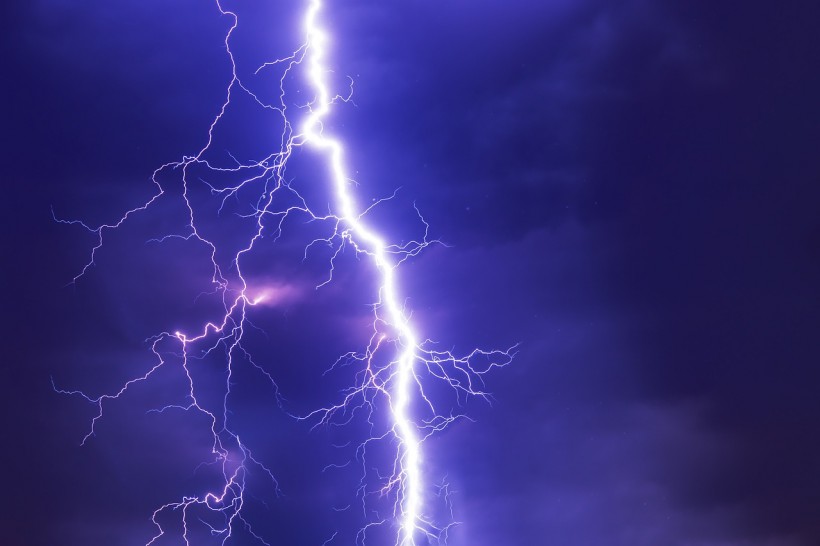Lightning is an intriguing yet dangerous natural phenomenon. Humans have tried studying and understanding them to control this energy, but all have failed, wherein some even die from these experiments. But now, Transcontinental News reports that scientists propose using a massive laser to control where it would land with an effectiveness greater than the existing lightning rod.
These laser beams created a virtual lightning rod, which theoretically direct ionized air in a straight line where the electricity could move freely. Early experiments were unsuccessful as the ionized air only absorbed the laser light within a short distance instead of redirecting it. but the research team improved their design to successfully divert lightning in other directions.

High-Powered Laser Diverts Lightning Bolts Atop a Mountain in Switzerland; Deemed More Effective Than Existing Technology
Catching Lightning on Top of Mountain
Lightning deflection technology has not changed that much since 1752 when Benjamin Franklin introduced the lightning rod. It is a pointed metal mast on top of buildings and other structures that are most likely to be hit by lightning strikes. the lightning rod intercepts lightning and guides them safely to the ground.
But the protection it could give is relative to its height. A 10-meter rod can protect an area within a 10-meter radius. That leaves airports, launchpads, power stations, wind farms, and nuclear power plants vulnerable to lightning strikes.
CNN reported that scientists from the Munich, Germany-based TRUMPF Scientific Lasers decided to test their Laser Lightning Rod weighs, which weighs more than 3 tons, is 1.5 meters (4.9 feet) wide, and about 8 meters (26.2 feet) long.
They tested the laser beam at a height of 2,502 meters (8,208 feet) atop Mount Säntis in Switzerland to see if it could act like one big virtual and movable lightning rod. Previous studies have supported the idea of using laser pulses to influence the trajectory of lightning strikes, but most of those experiments were only done in laboratories.
The car-size laser beam was installed near a telecommunications tower in the mountain where lightning strikes hit 100 times per year on average. The Laser Lightning Rod was able to divert four lightning strikes during the experiment. High-speed cameras recorded the experiment alongside other observations that recorded the high-frequency electromagnetic waves and X-ray bursts from the strikes.
Applied Physics Professor Jean-Pierre Wolf, a co-author of the study from the University of Geneva, explained that filaments of very intense light form inside the beam when very high-power laser pulses are emitted into the atmosphere. The filaments ionized the nitrogen and oxygen molecules.
READ ALSO: Is It Possible for Lightning to Strike in the Same Place Twice? Here's What Scientists, NASA Tell Us
Is the Laser Beam Better Than the Lightning Rod?
Despite its promising results, there is not a ton of evidence that the million-dollar laser beam is more effective than the cheap lightning rod that Benjamin Franklin introduced hundreds of years ago. As per BGR, the basic design behind lightning rods is to usher the electrical charge from a lightning strike safely to the ground using insulated wire.
The idea behind a laser beam is to create a straight path for electrical charge to follow and creating such a laser has taken time over the past decades since the 1990s. Those experiments failed in the past and lightning strikes continued to puzzle scientists.
The findings of the recent study, titled "Laser-guided Lightning" published in Nature Photonics, showed that the team managed to get the lightning to follow the laser beam partially before it jumped to the higher tower that was set to act as a standard lightning rod.
Although not wholly successful at replacing the lightning rod, the findings of this experiment showed that it can redirect lightning, which opens new doors for further research.
RELATED ARTICLE: What Causes Lightning? Low Radio Frequency Telescope Captures in Detail What Happens Behind Thunderstorms
Check out more news and information on Lightning in Science Times.




![Earth's Quasi-Moon Kamo‘oalewa Could Originate From Lunar Surface Not Asteroid Belt [Study]](https://1721181113.rsc.cdn77.org/data/thumbs/full/53275/89/56/50/40/earths-quasi-moon-kamo-oalewa-could-originate-from-lunar-surface-not-asteroid-belt-study.png)









